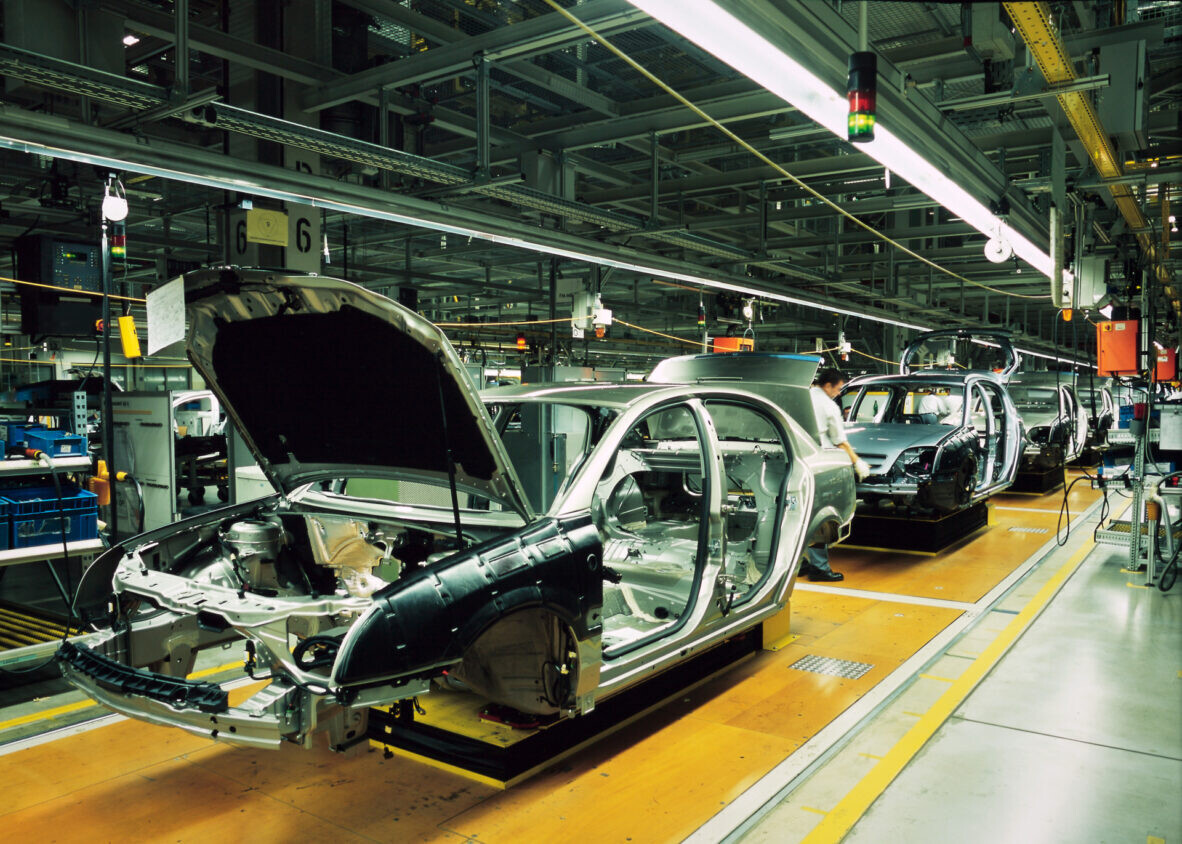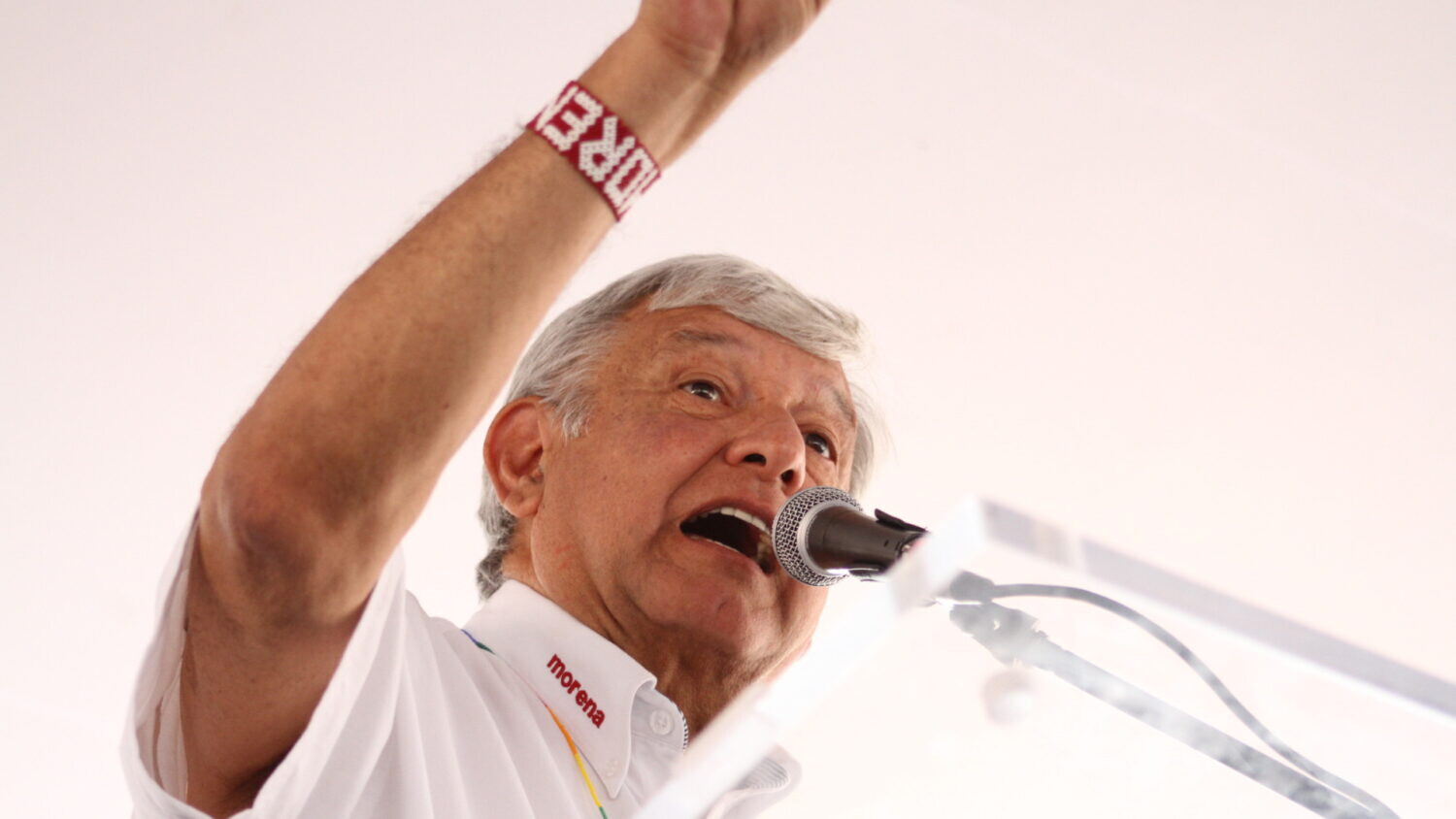Time to join Mexico's economic fiesta
Mexico recently overtook China to become the largest exporter to the US and as nearshoring picks up pace, Mexico will continue to profit...

The ‘new cold war’ between the US and China is the biggest threat to the global economy. Yet the geopolitical tensions will also create some winners. Take Mexico, for example. This year it overtook China to become the largest exporter to the US, while the manufacturing growth is pushing Mexico’s GDP above expectations. And with nearshoring – where companies that supply the US market move factories closer to the final consumer – set to increase, the Mexican economy’s fiesta is only just beginning.
Nearshoring is not a new phenomenon. In 2013 an influential report from Boston Consulting Group noted that hidden costs of offshoring – namely less flexibility to react to changing demand, complicated logistics, growing labour costs and theft of intellectual property – were encouraging companies to replace Asian factories with ones closer to the US. But since then, the supply chain disruption caused by the pandemic and Russia’s invasion of Ukraine – coupled with increased trade restrictions between the US and China – have accelerated the trend. According to a 2022 report published by the Inter-American Development Bank (IDB), nearshoring could increase Latin America’s annual goods exports by $64billion and services exports by $14billion in the medium term. And most of this new business will go to Mexico, with the IDB estimating that Mexico can claim almost 50% of the $74billion total.
Manufacturing might
According to Mexico’s central bank (Banxico), nearshoring led to a 3% increase in Mexico’s manufacturing production from June 2021 to June 2022. A Banxico survey found 24.8% of exporting manufacturers reported increased demand or investment, compared to 16.6% of non-exporters. Mexico’s main advantage is its location, as it shares a long border with the US and is well-connected to the world’s largest economy with excellent transport links. Black swan disruptions, like the pandemic and the war in Ukraine, will only have a temporary impact on global logistics chains. However, climate change will increase long-term pressure on companies from consumers, investors and regulators, to reduce the carbon footprint of the goods they sell. And a simple way to do that is to make products closer to the final market.
Mexico’s location and physical trade infrastructure is complemented by the United-States-Mexico-Canada Agreement (USMCA) – an upgrade of the Nafta deal that came into effect in 1994. Trade between the three countries increased from $290billion in 1993 to more than $1trillion in 2016, when Donald Trump came to power and began negotiating a new agreement that came into effect in 2019. The deal further strengthens the trading bloc against outside competitors, by demanding higher percentages of locally-produced content and boosting working conditions in Mexico.

The legal and regulatory guarantees that came with the first trade deal convinced thousands of international companies to set up manufacturing operations in Mexico. I’ve toured the country’s state-of-the-art aerospace, auto and medical device factories and it’s incredible how Mexico has inserted itself into US supply chains. The emergence of manufacturing clusters in key sectors, means Mexico is so significant in certain industries that it pulls in further international suppliers. The most potent example is the car industry, where Mexico is now the world’s seventh-largest producer of light vehicles, sixth-largest heavy vehicle maker and fourth-largest cargo vehicles. That means the world’s largest auto manufacturers have factories in the country – for example Audi, Baic Group, BMW, Stellantis (Fiat and Peugeot), Ford, General Motors, Honda, Hyundai, Kia, Mazda, Mercedes Benz, Nissan, Toyota, and Volkswagen all produce cars in Mexico. That has a multiplier effect, because presence of those carmakers means many of their suppliers go there too.
Mexico’s ‘industrial revolution’, which was kickstarted by the first US trade deal, has turned the country into the world’s 12th-largest exporter, outperforming the relative size of its economy. Indeed, it now accounts for roughly half of all Latin American manufacturing exports – another outsized performance. The bulk of those exports are cars, white goods, aerospace components and textiles but new, higher-value products, such as semi-conductors and electric vehicles, are expected to benefit from two pieces of US legislation: the Chips and Science Act and the Inflation Reduction Act. Another boost to Mexico’s exports will come from digital services, which are covered for the first time in the USMCA deal. Mexico has established digital clusters, while its tech industry attracted $38billion of venture capital between 2016 and 2021 – a huge increase on the previous five years – resulting in a start-up boom. And while proximity isn’t essential for service exports, it helps that Mexico is on the same range of time zones as the US. The digital trade provisions in USMCA haven’t been fully adopted by Mexico yet, but as they are, it will create a huge opportunity for Mexico-based tech firms to serve US businesses and consumers.
Mexico’s main attraction for manufacturers who want to make the most of its North American trade deal, is its large, young, growing and cheap workforce. Every year the country produces more than 100,000 engineering graduates, as its young population aims for well-paid factory jobs. Labour provisions in the USMCA deal have improved working conditions for some Mexican workers, by increasing the role of unions and collective bargaining. The Mexican government has also increased Mexico’s minimum wage by nearly 100% since 2022 – which is positive for the wider economy - but labour costs remain well below levels in the US or Canada.
Diversified economy
Mexico might be the largest manufacturer in Latin America, but there is more to the economy than factories. Mexico is also a major exporter of oil, gas and minerals. Mexico is home to around 50 billion barrels of untapped hydrocarbon reserves and produces around 2 million of barrels of oil per day. It exports crude to the US but also imports refined petroleum products. Investing in the state-controlled energy sector is difficult under this president – more on him later – who has reversed his predecessor’s promising energy reform. But the abundance of cheap oil, gas, coal and renewable power, means the country will never run out of energy.
Mexico is also a mining powerhouse. It has the world’s fourth-largest zinc reserves, fifth-largest lead and sixth-largest copper reserves. It is also a top-ten gold producer. Mexico's significant supplies of key industrial metals, such as copper, will make it a valuable partner to the US as the latter looks to battle China’s dominance of the energy transition supply chain. Unlike oil and gas, the mining sector is operated by a well-established mix of international companies.
Another important natural resource is agriculture. Farming exports to the US are worth almost $40billion per year, compared to around $120billion of auto exports, adding another element of diversification to the export basket. Moreover, production is expected to increase as government programmes help smaller farmers apply modern techniques, such as fertiliser, to smallholdings. The final Mexican resource worth mentioning is its emigrants. Mexicans working abroad – mostly in the US – sent an incredible $60billion back to their families in 2022. This inflow of capital is worth 5% of GDP and make Mexico the second-highest receiver of remittances in the world, after India.
Mexico’s mix of natural resources, manufacturing might and positive demographics give it a solid, diversified economy. It is also well-run, with Banxico raising interest rates to fend off inflation in June 2021, a full nine months before its counterparts in the US. Now approaching the end of its monetary tightening cycle, inflation has fallen to 6% from 8% at the start of the year. But the interest rate rises haven’t choked growth, with GDP expected to expand by 2.5% in 2023, well above earlier forecasts. While an unemployment rate of just 3% means the consumer sector should also benefit. The economy’s strength is reflected in the performance of the Mexican peso, which has been dubbed the ‘super peso’ by economists, following its 20% gain against the dollar between January and July this year. It’s notable that Mexican goods managed to gain market share in the US, despite the unfavourable exchange rate. Analysts at UK-based consultancy, Capital Economics, believe the super peso isn’t sustainable, but any fall in value will give manufacturers a boost.
Risky Mexico?
Despite all of the positive factors mentioned, many UK-based readers will see Mexico as a risky bet. After all, it is the epicentre of the global drug war, with cartels engaging in pitched battles against state security forces and an estimated 500,000 people killed or missing since 2000. But while the illegal drug trade is a tragedy for those involved, it has a limited impact on most large, international companies. As the business intelligence consultancy, Control Risks, demonstrates in its latest ‘Security Threat Levels Map’, while the country’s north-eastern states are “high risk”, there are still huge swathes of central and northern Mexico that are “medium risk”. That means crime only impacts businesses “sometimes” and can be countered by “enhanced security measures”. Companies picking a manufacturing location calculating the total cost and the huge savings Mexico provides in logistics, taxes and wages, dwarf the price of a few extra cameras or security guards.
The other ‘risky’ part of the Mexico story is its politics. Mexico is currently governed by a fiery, left-wing populist Andrés Manuel López Obrador – or Amlo as he is more commonly known. A former school teacher who had two runs at the presidency before finally winning in 2018, Amlo often acts like a typical Latin American populist. He uses his daily talk show to lambast opponents, he cancels huge private-sector projects, such as a new airport, and has increased social payments. However, he is also very pragmatic. He has proved more austere than any recent UK or US government, with the fiscal deficit expected to come in at 1.9% in 2023. He was also a willing negotiator when Trump wanted to redraw the trade deal.

The worst thing Amlo has done to the Mexican economy is reverse his predecessor’s attempts to liberalise Mexico’s stagnant, state-controlled energy sector. Amlo has scared off private oil and gas investors, whose capital and technology are needed to unlock the country’s vast shale and offshore reserves. He has also favoured fossil fuel electricity generation over renewable energy projects and his pressure recently forced Iberdrola to sell $6billion of power plants to the state producer. Amlo’s interference has been bad for investors in Mexico’s energy sector, but, as Alejandra Soto, an analyst from Control Risks explains, the rest of the economy has been mostly untouched. “When AMLO took office in 2018, his political platform raised concerns for several industries that feared an uncertain regulatory environment. The administration’s controversial agenda has mainly affected the energy sector, while the regulatory framework for other economic activities has remained mostly benign.”
But for all the short-term damage that Amlo’s energy policy has caused, his tenure has also demonstrated the strength of institutions in Mexico’s nascent democracy. The PRI (the Spanish acronym for the Institutional Revolutionary Party) governed Mexico from 1929 to 2000, which means Mexico only has a very short, recent tradition of peaceful and democratic transfer of power. The greatest threat to democracy in that time has come from Amlo, a formidable political force who formed his own party to win the election and enjoys approval ratings above 60% despite ruling with austerity during a pandemic. But even Amlo has found himself checked by Mexico’s institutions. For example, Banxico insisted on raising rates early, despite Amlo’s pressure not to. Likewise, the Supreme Court ruled against Amlo’s attempts to weaken the electoral commission. Mexico’s six-year presidential limit means that Amlo will leave power next year having proven that the structural trends driving Mexico’s economy happen despite, not because, of its leaders.
But for all the short-term damage that Amlo’s energy policy has caused, his tenure has also demonstrated the strength of institutions in Mexico’s nascent democracy.
The big question is, who succeeds Amlo in the 2024 elections. His personal dominance makes it appear likely the next president would be someone from his party, Morena, but a year is a very long time in politics. However, one thing we do know, notes the excellent Michael Stott in the Financial Times, is “whoever succeeds Amlo is likely to be less popular and less charismatic than the current president”. That means they will be less able to interrupt the irrevocable integration of Mexico into the US economy. Moreover, the next president is unlikely to share Amlo’s eccentric dislike of renewable energy projects. Again, it is inevitable that Mexico will start to use more of its abundant solar and wind power potential.
The biggest threat to Mexico’s growth story is a US slowdown, which is bound to happen at some point. However, over the long-term Mexico will benefit from the redrawing of the global trade map. It is a well-run, diversified emerging market that is rich in resources and is benefitting from ever closer ties to the world’s richest economy.
This article is the third of a three-part series exploring Mexico’s nearshoring potential.